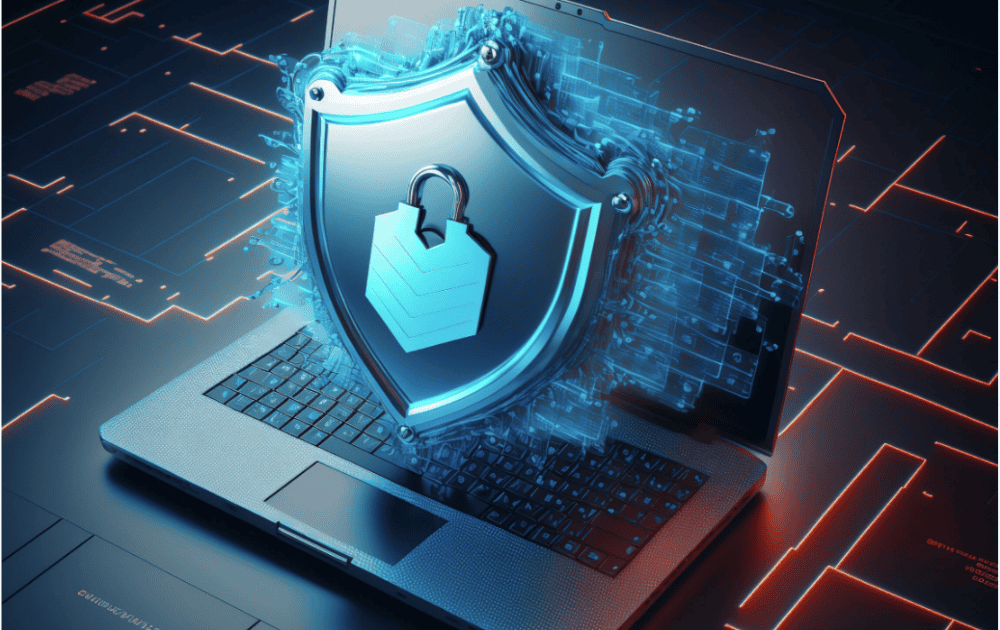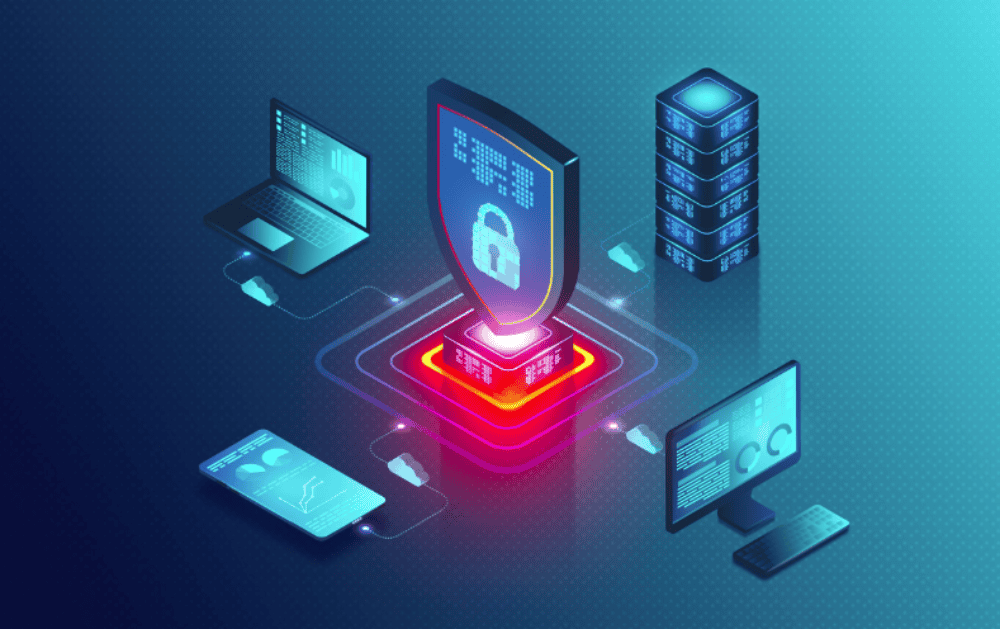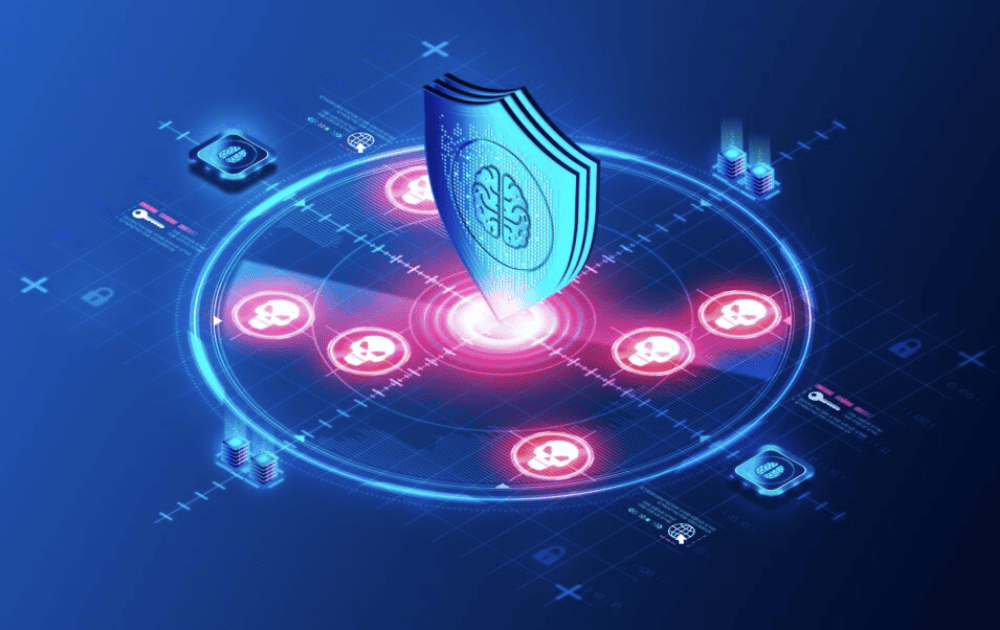Focusing on IT security, understanding the significance of safeguarding endpoints is paramount for the smooth operation of businesses. Endpoint security, a vital aspect of overall IT security, encompasses various measures aimed at securing endpoints like computers, laptops, mobile devices, and servers.
Importance of Endpoint Security
Endpoint security holds immense importance in the digital landscape, especially for SMEs seeking robust IT support and services. It serves as the last line of defense against potential cyber threats, providing essential IT support that helps prevent unauthorized access, data breaches, and other malicious activities that could compromise sensitive information.
Definition of Endpoint Security
Endpoint security is a comprehensive approach to securing the various endpoints within a network. It involves deploying security solutions and protocols to protect endpoints from cyber threats, including malware, ransomware, and unauthorized access. By implementing endpoint security measures, organizations can fortify their IT infrastructure and prevent potential security breaches.
Key Components of Endpoint Security
Endpoint security comprises several key components that work together to ensure the protection of endpoints and data. These components include:
| Component | Description |
| Antivirus Software | Software designed to detect and eliminate malware and other malicious threats from endpoints. |
| Patch Management | Process of monitoring, evaluating, and applying patches to address vulnerabilities in software and systems. |
| Network Segmentation | Dividing a network into smaller segments to enhance security and control access to sensitive information. |
Understanding these key components is essential for SMEs looking to bolster their endpoint security posture and mitigate the risks associated with cyber threats. By incorporating a multi-layered approach to endpoint security, organizations can strengthen their defenses and safeguard their digital assets effectively.
Common Threats to Endpoints
Focusing on endpoint security, it's crucial to be aware of the common threats that can jeopardize the integrity and confidentiality of your organization's data. Three prevalent threats to endpoints include malware, phishing attacks, and insider threats.
Malware
Malware, an abbreviation for malicious software, encompasses a wide range of programs intended to breach, harm, or obtain unauthorized entry into computer systems. Common types of malware include viruses, worms, Trojans, and ransomware. These malicious programs can be introduced into endpoints through various means, such as infected email attachments, compromised websites, or removable storage devices.
It's essential for organizations to deploy robust antivirus and anti-malware solutions to detect and prevent malware infections. Regularly updating these security tools and educating end-users about safe browsing habits and email practices are critical steps in mitigating the risk of malware attacks.
Phishing Attacks
Phishing attacks are deceptive attempts to acquire sensitive information, such as usernames, passwords, and financial details, by posing as a trustworthy entity in electronic communication. These fraudulent emails, texts, or calls often contain malicious links or attachments that, when clicked or opened, can lead to data breaches or malware infection on endpoints.
Educating employees about the signs of phishing attacks, implementing email filtering solutions, and conducting regular phishing simulation exercises are essential measures in combatting this threat. In addition, multi-factor authentication and encryption can add layers of protection against unauthorized access resulting from successful phishing attempts.
Insider Threats
Insider threats refer to security risks posed by individuals within an organization, such as employees, contractors, or business partners, who misuse their authorized access to networks, systems, or data for malicious purposes. Insider threats can stem from negligent actions, such as accidental data exposure, or deliberate actions, such as data theft or sabotage.
To mitigate insider threats, organizations should implement strong access controls, monitor user activity, and enforce least privilege principles to limit unauthorized data access. Conducting regular security awareness training, implementing data loss prevention (DLP) solutions, and establishing clear policies and procedures for handling sensitive information can help prevent insider incidents.
Being vigilant and proactive in addressing these common threats to endpoints, organizations can fortify their security posture and safeguard their valuable data assets from potential cyber threats. Regular risk assessments, security audits, and incident response planning are fundamental components of a robust endpoint security strategy.

Strategies for Effective Endpoint Security
Bolstering endpoint security, employing robust strategies is essential to safeguarding your IT infrastructure against potential threats. Three key strategies for enhancing endpoint security include antivirus software, patch management, and network segmentation.
Antivirus Software
Antivirus software plays a critical role in detecting and mitigating known threats like viruses, worms, and trojans. By regularly scanning endpoints for malicious code and patterns, antivirus software helps identify and neutralize potential threats before they can cause harm. Additionally, antivirus tools provide real-time protection by monitoring system activities and flagging suspicious behavior.
Patch Management
Patch management is a vital aspect of endpoint security that involves updating software applications, operating systems, and firmware to address known vulnerabilities. Regularly applying patches ensures that endpoints are equipped with the latest security fixes, reducing the risk of exploitation by cyber threats. By establishing a systematic patch management process, organizations can proactively enhance the security posture of their endpoints.
Network Segmentation
Network segmentation is the process of partitioning a network into smaller sub-networks to improve security by limiting the spread of threats within the network. By segmenting endpoints based on roles, departments, or security levels, organizations can contain potential breaches and limit the impact of a security incident. Network segmentation also helps in isolating compromised endpoints, preventing threats from spreading across the entire network.
| Strategy | Description |
| Antivirus Software | Detects and mitigates known threats through regular scanning and real-time protection. |
| Patch Management | Ensures software and systems are up-to-date with the latest security patches to mitigate vulnerabilities. |
| Network Segmentation | Divides the network into smaller segments to restrict lateral movement of threats and contain security incidents. |
Implementing a comprehensive endpoint security strategy that includes antivirus software, patch management, and network segmentation is crucial in fortifying your organization's defense against cyber threats. By combining these strategies with other security measures, such as endpoint detection and response (EDR) and data loss prevention (DLP), SMEs can establish a robust security framework to protect their endpoints and sensitive data from evolving cybersecurity risks.
Implementing Endpoint Security Measures
Safeguarding endpoints against cyber threats, implementing robust security measures is essential. Three key strategies for enhancing endpoint security include Endpoint Detection and Response (EDR), Data Loss Prevention (DLP), and adhering to Endpoint Security Best Practices.
Endpoint Detection and Response (EDR)
Endpoint Detection and Response (EDR) solutions play a critical role in identifying and mitigating security incidents on endpoints in real-time. These solutions continuously monitor endpoint activities, analyze behaviors, and detect potential threats or suspicious activities. By leveraging advanced analytics and threat intelligence, EDR tools provide security teams with the insights needed to respond promptly to security incidents and minimize the impact on the organization.
Data Loss Prevention (DLP)
Data Loss Prevention (DLP) technologies are designed to prevent the unauthorized exposure or leakage of sensitive data from endpoints. DLP solutions monitor and control data transfers, enforce data protection policies, and safeguard critical information from being accessed, copied, or transmitted outside authorized channels. By implementing DLP measures, organizations can mitigate the risk of data breaches, regulatory non-compliance, and reputational damage that could result from data loss incidents.

Endpoint Security Best Practices
In addition to deploying specialized security tools, following endpoint security best practices is paramount in maintaining a strong security posture. Some key best practices include:
- Regularly updating and patching endpoint devices to address vulnerabilities and enhance security.
- Enforcing strong password policies and implementing multi-factor authentication to strengthen access controls.
- Conducting regular security awareness training for employees to educate them about common threats and security best practices.
- Implementing network segmentation to isolate critical systems and limit the impact of potential breaches.
- Monitoring endpoint activities and network traffic for anomalous behavior that may indicate a security threat.
Integrating EDR solutions, DLP technologies, and adhering to best practices, organizations can fortify their endpoint security defenses and effectively mitigate risks associated with cyber threats. Proactive monitoring, threat detection, and data protection measures are crucial in safeguarding endpoints and securing sensitive information from potential security breaches.
Endpoint Security in the Cloud
Cloud computing has revolutionized the way businesses manage their IT infrastructure, offering numerous benefits including enhanced flexibility, scalability, and cost-efficiency. When it comes to endpoint security, leveraging cloud-based solutions can provide SMEs with robust protection against evolving cyber threats. In this section, we will explore cloud-based endpoint security solutions and the associated benefits they offer.
Cloud-Based Endpoint Security Solutions
Cloud-based endpoint security solutions offer SMEs a centralized approach to securing their endpoints, regardless of the location of the devices. These solutions leverage cloud infrastructure to deliver real-time threat protection, continuous monitoring, and automated responses to potential security incidents. By shifting the security management to the cloud, organizations can streamline their security operations and ensure consistent protection across all endpoints.
One of the key features of cloud-based endpoint security solutions is their ability to provide visibility and control over endpoints from a single console. This centralized management approach simplifies security administration, allowing IT teams to efficiently monitor and respond to security alerts and incidents. Additionally, cloud-based solutions often offer automatic updates and threat intelligence feeds to ensure that endpoints are protected against the latest cyber threats.
Benefits of Cloud Endpoint Security
Embracing cloud endpoint security solutions comes with a variety of benefits for SMEs seeking to enhance their security posture. These benefits include:
| Benefits of Cloud Endpoint Security |
| Scalability: Easily scale security measures to accommodate the changing needs of the organization. |
| Cost-Efficiency: Reduce upfront hardware and maintenance costs associated with traditional endpoint security solutions. |
| Enhanced Protection: Leverage the power of cloud infrastructure for real-time threat detection and response. |
| Simplified Management: Centralize endpoint security management for improved visibility and control. |
| Remote Monitoring: Monitor and secure endpoints regardless of their location, supporting remote work environments. |
| Automatic Updates: Ensure that endpoints are consistently protected against emerging threats with automatic updates. |
Adopting cloud-based endpoint security solutions, SMEs can fortify their defenses against cyber threats and safeguard their valuable data and assets. The scalability, cost-efficiency, enhanced protection, simplified management, and remote monitoring capabilities of cloud endpoint security solutions make them a compelling choice for organizations looking to strengthen their security posture in an increasingly digital landscape.

Revolutionize Your IT Workflow with LK Tech
Embracing future trends in endpoint security enables businesses to strengthen their defenses, adapt to emerging threats, and enhance overall security resilience. By incorporating machine learning and AI technologies, adopting a zero-trust security model, and leveraging endpoint security automation, organizations can proactively safeguard their endpoints against evolving cyber threats and secure sensitive data effectively. At LK Tech, we offer top-notch IT support in Cincinnati, tailored to your unique needs, ensuring you have the best protection in place. If you're looking for reliable IT services, contact us today to discover how we can help secure your business!


